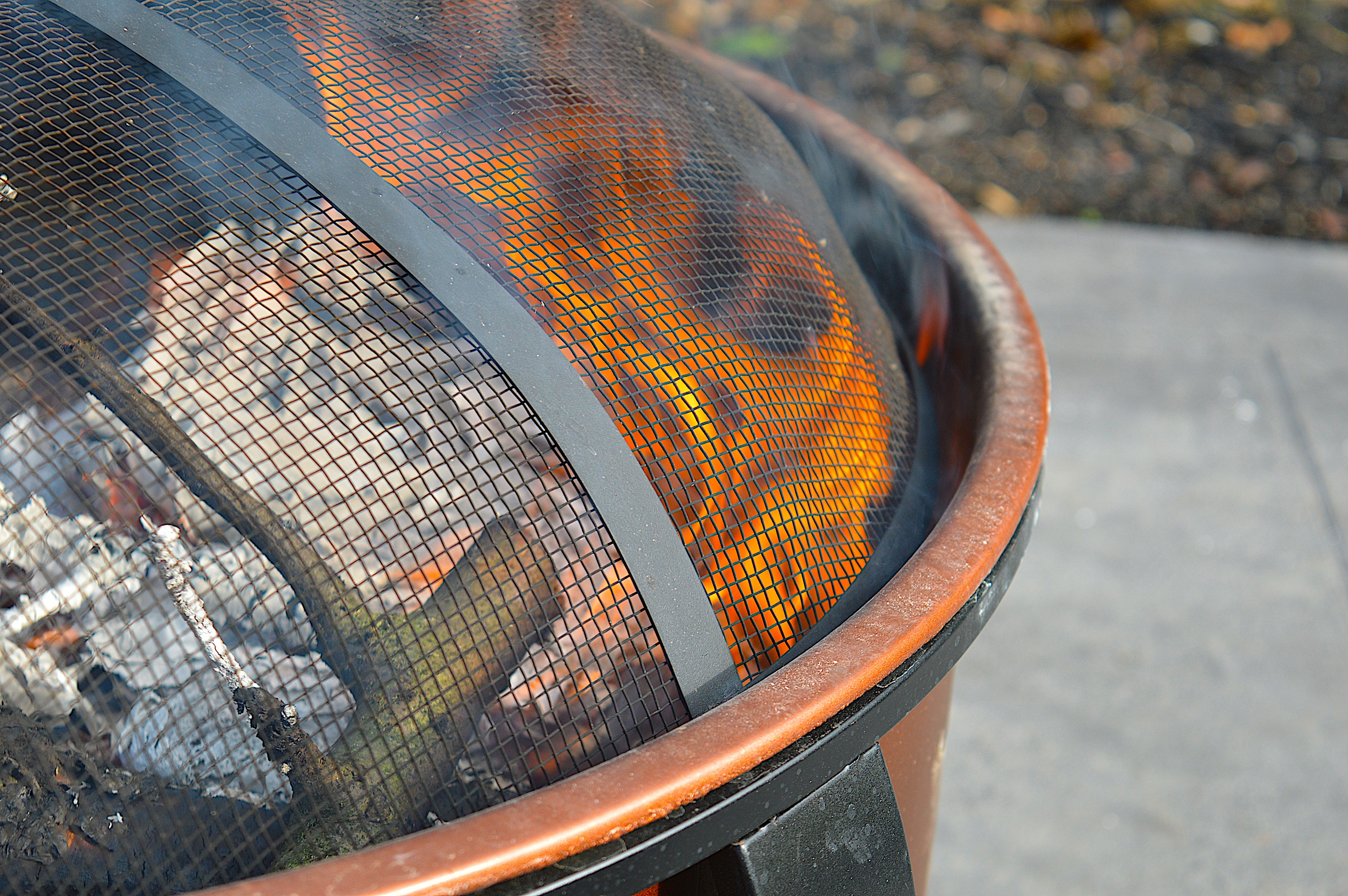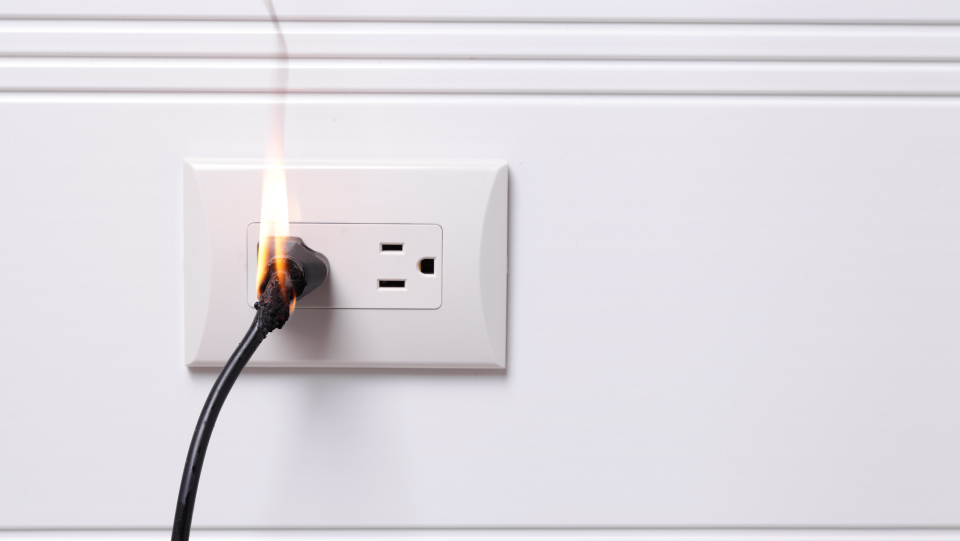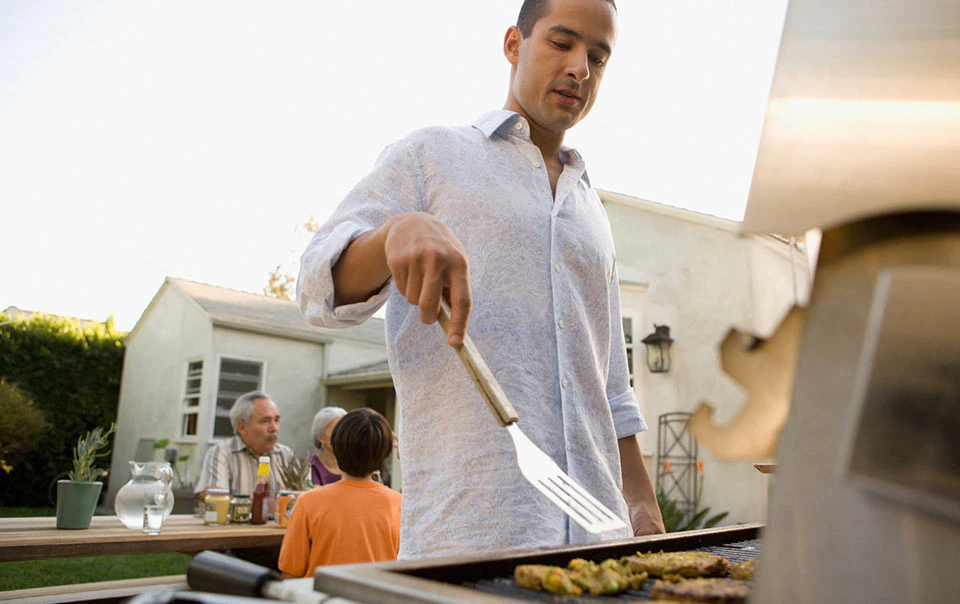Fire Pit Safety Tips


Gathering around an outdoor or backyard fire pit has become a favorite pastime for many Americans. Whether you’re toasting marshmallows with the kids, entertaining family and friends, or just enjoying the warm comfort, fire pits can build great bonds and memories.
While a crackling fire may bring people together, it could also be dangerous if not handled safely and responsibly. By following good fire pit safety practices, you can help protect your family, guests, yard and home.
Outdoor fire pit options
Backyard fire pits are available in many different styles, shapes and sizes. Some are designed to stay in a fixed location, while others are portable. Some are placed on patios or decks, and others reside in the yard itself. Fire pits can be constructed from brick, stainless steel, metal, rock, cast iron and other solid materials. Essentially, your fire pit and its designated area can be as simple or elaborate as you’d like, or as space and budget allow.
You can also choose from units that use different types of fuel to produce crowd-pleasing flames. The most common fire pits burn wood, charcoal, propane or natural gas.
Each type of fire pit has pros and cons when it comes to heat generation, seating capacity, flame control, cooking ability, cost, energy efficiency and more. One trait they all share is the potential to cause personal injury and property damage. That’s why it’s critical to follow proper safety precautions.
Types of fire pit-related damage
The reason preventive measures are so important is that fire accidents occurring at home can be devastating. Unintentional residential fires, including outdoor fires, are responsible for nearly 11,000 injuries in the U.S. each year.1
When it comes to your property, damage caused by fire pits can range from a small hole in a chair cushion to a total house fire. Some examples include:
- A fire pit placed on a small deck could ignite combustible decking material beneath the fire pit or reach the rails and spread to the house’s siding.
- Overhanging leaves or branches can ignite and jump to other trees.
- Large flames may ignite nearby structures like a pergola, fence or detached garage.
- Sparks or embers could fly onto nearby furniture, dry leaves or into combustible landscaping mulch and expose the house or other structures.
- A guest sitting too close or reaching over the fire with a marshmallow stick may have their clothing catch fire.
- Smoldering hot ashes left to burn out on their own could be rekindled by a gust of wind and be blown onto combustible items.
Fires can travel and wreak havoc rapidly, often when you least expect it. They’re frequently costly too. This scenario illustrates how easily they can get out of control
From backyard feature to fire hazard
The temperature outside is just right. So you think this is a perfect night to use the fire pit on your deck. Your family gathers in the back yard. Fresh kindling is added to the pit and a fire is lit. A slight breeze in the air starts to pick up, but it doesn’t seem like anything to worry about. Just then your cellphone rings and you go into the house to take the call where there’s less noise.
Soon, you hear a commotion and rush back outside. The wind picked up considerably, fanning flames that eventually reach a nearby hanging plant. The plant and its plastic pot catch fire and the fire spreads to the wooden deck rail and the patio furniture leaning against it. Thankfully you have a fire extinguisher on the deck. You’re able to put out the fire and everyone is safe, which is what matters most. But the episode was stressful for all involved and resulted in thousands of dollars in damage.
How do you help make an outdoor fire pit safe?
To put safety first, consider how you plan to use your fire pit, along with the size, desired location and fuel source. But that’s not all. You also need to pay attention to any laws, rules or guidelines governing the use of open fires. These include state laws and regulations, local ordinances and permit requirements, and homeowners association rules.
Once you’ve determined that you’re able to move forward with your fire pit, it’s time to put safety practices in place. The following tips can help you avoid danger and damage from your outdoor fire pit:
- Fire pits should be placed at least 10 feet away from your home, other structures or anything combustible.
- Don’t set up fire pits under string lights or power lines.
- Use a fire-proof base for your unit, especially on a wood deck.
- Follow no-burn alerts and avoid starting a fire in windy conditions.
- Place your fire pit on a stable, even, fire-resistant surface.
- Don’t leave a fire unattended.
- Watch children and pets closely when using the fire pit. They may be less cautious than adults near a fire.
- Make sure everyone sits a safe distance from the fire.
- Don’t store matches or lighters where children can access them.
- Never use lighter fluid, gasoline or kerosene in a fire pit.
- With wood-burning fires, use a metal screen cover to keep sparks contained.
- Keep stacked firewood at least 30 feet from your fire pit and house.
- Put out wood and charcoal fires or turn off propane and natural gas fires all the way before you leave the backyard.
- Keep a full fire extinguisher, bucket of water or water hose readily available.
- For wood-burning units, consider how different types of wood burn, how quickly they ignite and how long they stay lit.
- Don’t burn wood-based construction materials (such as pressure-treated woods or plywood). They may contain chemicals that create toxic smoke.
And remember, these practices aren’t only for your own fire pit. When visiting a friend’s or relative’s backyard, keep an eye out for any fire safety concerns to help yourself and others stay out of harm’s way.
Frequently asked questions on fire pit safety rules
Ensuring that your fire pit is both safe and fun for everyone is the most important part of the experience. Beyond the essential safety tips, these answers to common fire pit questions and concerns can help you enjoy your outdoor fire while minimizing potential accidents.
How far should a fire pit be from a house?
A minimum 10-foot distance from your house – as well as deck rails, furniture, sheds, trees, or anything else that can catch fire – is recommended. This helps prevent sparks and embers from landing on nearby materials that may ignite and cause damage.
When is it safe to leave a fire pit?
It’s not safe to leave a fire burning on its own without supervision. Always ensure the fire is completely extinguished before exiting the area. This means no glowing embers or smoke. Use water or sand to extinguish the fire thoroughly. Then monitor the area to make sure there are no remaining hot spots.
What can you burn in a fire pit?
You can burn seasoned firewood, manufactured fire logs or charcoal in a fire pit. Avoid using materials like treated wood, leaves, paper or trash – these can release harmful toxins when burned. Leaves, paper and trash may also generate flying embers that could travel greater distances and ignite nearby combustible materials. Always check local regulations, as there may be restrictions on what you’re allowed to burn in your area.
Can you put a fire pit on a wooden deck?
Placing a fire pit on a wooden deck can be dangerous due to the risk of heat and embers damaging or igniting the deck. If you want to use a fire pit on a wooden deck, use a fire pit pad or heat shield designed for this purpose. This will help protect the deck’s surface and help ensure safe operation of the outdoor fire.
Can you have a fire pit under a covered patio?
It’s generally not safe to have a fire pit under a covered patio or other enclosed structure. The close proximity of combustible materials and the potential for smoke accumulation can pose a fire hazard and health risk. Consider open-air locations away from structures instead.
Fire protection starts with a plan
Before building or buying a fire pit, or if you already own one, have a plan for providing a safe environment for your family, friends, pets and home. You’ll also want to ensure you’re complying with all state, local and homeowners association (if applicable) laws and requirements.
Additionally, ask your insurance agent whether owning a fire pit affects your homeowners insurance. Your policy may outline specific safety and coverage guidelines for fire pits.
To discover more about protecting your property with homeowners insurance, contact your local independent agent, get a quote or speak with a Travelers representative today.



